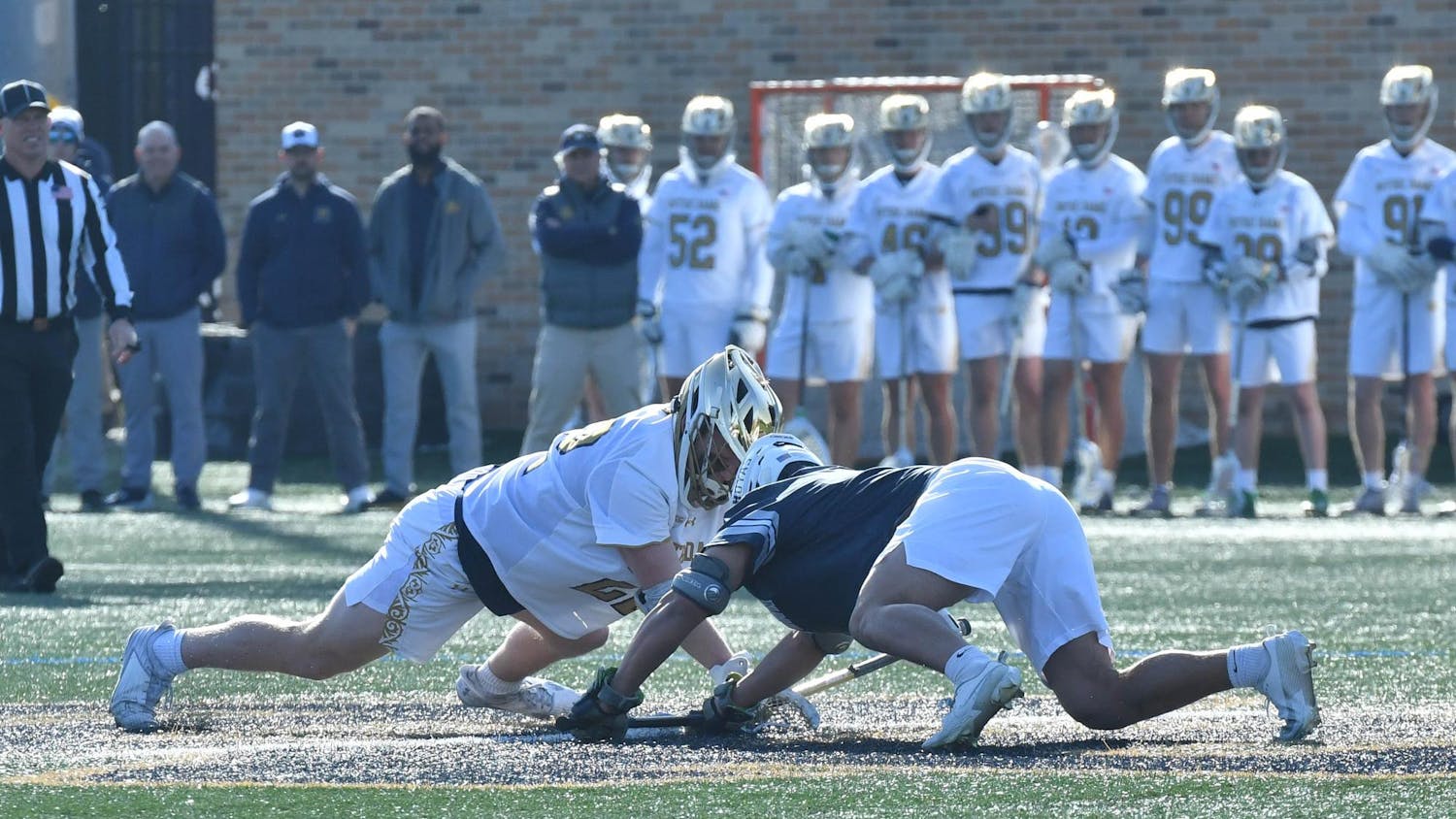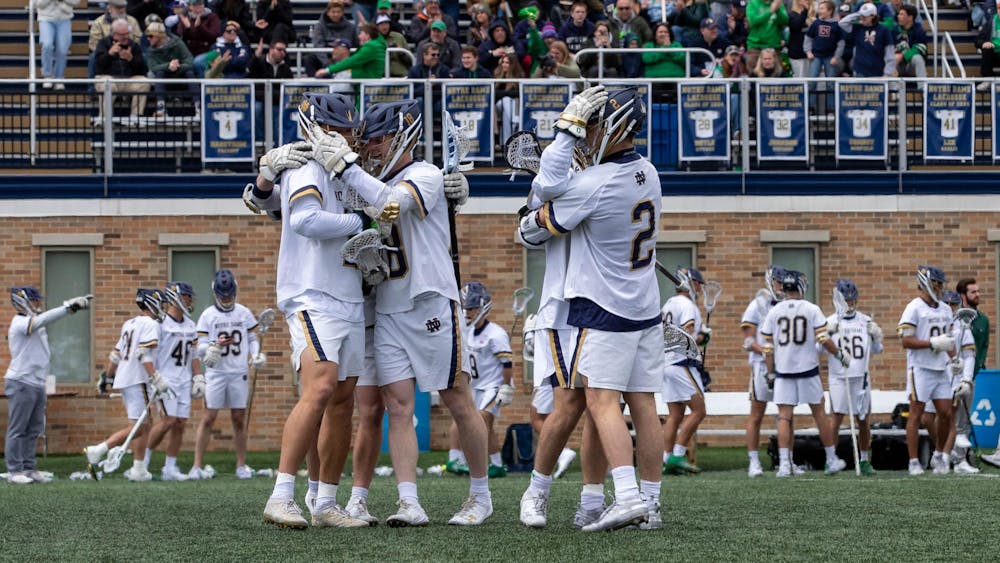Notre Dame football has been a defense-oriented program for most of its history. From the Miami pass breakup in 1988 and the goal line stand in 2012, to this year’s BYU fourth down stop and the Clemson routing that featured both a pick-six and a blocked punt; there have been games won by the Irish defense, sometimes in spite of the offense.
This weekend, however, the offense almost won the game in spite of the defense. Now it wasn’t for lack of trying. The Irish hurried Williams all day and were able to force two punts from the Heisman favorite and his stellar offense. But, when it came down to it, the inability to manage the dual threat and tackle the ball carrier quickly cost the Irish the game. Caleb Williams threw for 232 yards while picking up 35 yards with his feet (more if you consider how many circles he ran in). Beside him, Austin Jones picked apart the Irish, averaging six yards a carry for 154 total.

The issues with the dual-threat quarterback and a star running back were not new, only amplified from earlier in the season. Henry Colombi and Khalan Laborn quite literally gave the Irish a run for their money in game two of the season. While Colombi didn’t get as much yardage on the ground as Williams did, he scrambled long enough for players to get open and to threaten the Irish that he may turn upfield. Laborn took advantage of that and brought home 163 yards, including a touchdown.
When Cal came to visit Notre Dame Stadium, Jack Plummer did more of the work himself racking up 184 yards through the air and 34 on the ground. Coupled with a substantial performance from DeCarlos Brooks, the defense let up 17 points by the end of the third, and it took the Irish offense until late in the game to turn the tide.
In several of my picks this season, I was worried the Irish wouldn’t be able to prepare for a quarterback they didn’t know as well (as the back half of the season saw several capable backup quarterbacks). This only seemed an issue against Navy, when third-string QB Maasai Maynor introduced a real passing option into the existing triple option mix. The junior could turn to Daba Fofana who had 133 yards on the day but also completed 51 yards through the air in the fourth quarter alone, helping the Midshipmen to put up 19 unanswered points. Had the Irish offense not controlled the clock, Notre Dame would’ve been in more trouble than a 35-32 final.
Zooming out even further, the issue is not contained to 2022 but occurred in 2021 as well. Since it became a Freeman-led defense, the Irish have had trouble with dual-threat quarterbacks. The main aggressors last year were Sam Howell and the Tarheels, Desmond Ridder and the Bearcats and Spencer Sanders and the Cowboys.
Well, it was them — and their starting running backs.
Against Howell, the Irish offense stepped out first with early scoring, up 17-13 at the half. The then-draft prospect put up 341 yards though and ran for 101. When he didn’t have the ball, Ty Chandler took it for 83 yards, keeping the Tarheels in the conversation. But, early Irish offense pulled through.

Ridder and Sanders found a way to control the game and the score.
Ridder caused the first home loss for every student on campus. The Cincinnati star was unstoppable throwing for 297 yards and running for 26 and a touchdown but scrambling for more. He was boosted by Jerome Ford who used 17 carries to steal 71 yards from the Irish. The day never turned positive for the Irish as Notre Dame found itself shut out at the half and down 17. The offense pulled through to cut that to 11, but Cincinnati controlled the clock and the Irish defense couldn’t stop time — or Ridder.
The most obvious of these issues (besides this weekend) showed up in last year’s bowl game. At half, Spencer Sanders figured out this flaw in the Irish game and the quarterback was able to light up the scoreboard behind 496 all-purpose yards, 371 passing and 125 rushing. When forced out of the pocket, the Irish couldn’t find a way to bring him down, stuck between the options. One of those options was Jaylen Warren, yet another successful running back behind a dual threat. Warren took 82 yards from the Irish over the game, 57 of which came in the second half, complimentary of Sanders.
The Irish have been plagued by this inability since the start of the 2021 season. It begs the question of whether this is an issue with the current personnel or with the style of coaching. Freeman discusses consistently that execution needs to start with him. But, even when he has a plan to execute, does that mean the roster he has is ready to deliver? Is it just because both of the last two years have been transitional for the defense? Do Irish fans need to wait for Freeman-style recruits to come in? Or, can the young Irish make the changes now?
Saturday’s performance showcased a split answer to the last one. Xavier Watts looked confident with nine tackles, but young star Ben Morrison didn’t look as good as usual and Jaden Mickey — who had to step in and start for an injured Cam Hart — spent most of the evening well off his receiver, so he did not lose him deep. In the process though, he was giving up short first downs left and right as he missed several tackles and only made two. Additionally, the Irish boast an experienced front seven. With that experience comes the potential to leave. What does that mean for the Irish as they try to replace that talent?
Maybe, in that regard, the Irish will find new success as recruits come into a well-established system. Assuming Golden and Freeman make extended stays, there is a lot of room for the Irish to grow. And, this defense has found success in the last two years; that is obvious. Often the Irish are making more than enough stops, and plenty of late-game ones that matter. But so far, a defense under Freeman doesn’t seem to have an answer to the dual-threat quarterback with a trusty running back at his side. The more evidence that piles up, the sooner other teams will figure that out, and there doesn’t seem to be a clear path forward for the locker room to address this concern.
Contact Mannion McGinleyat mmcginl3@nd.edu.












